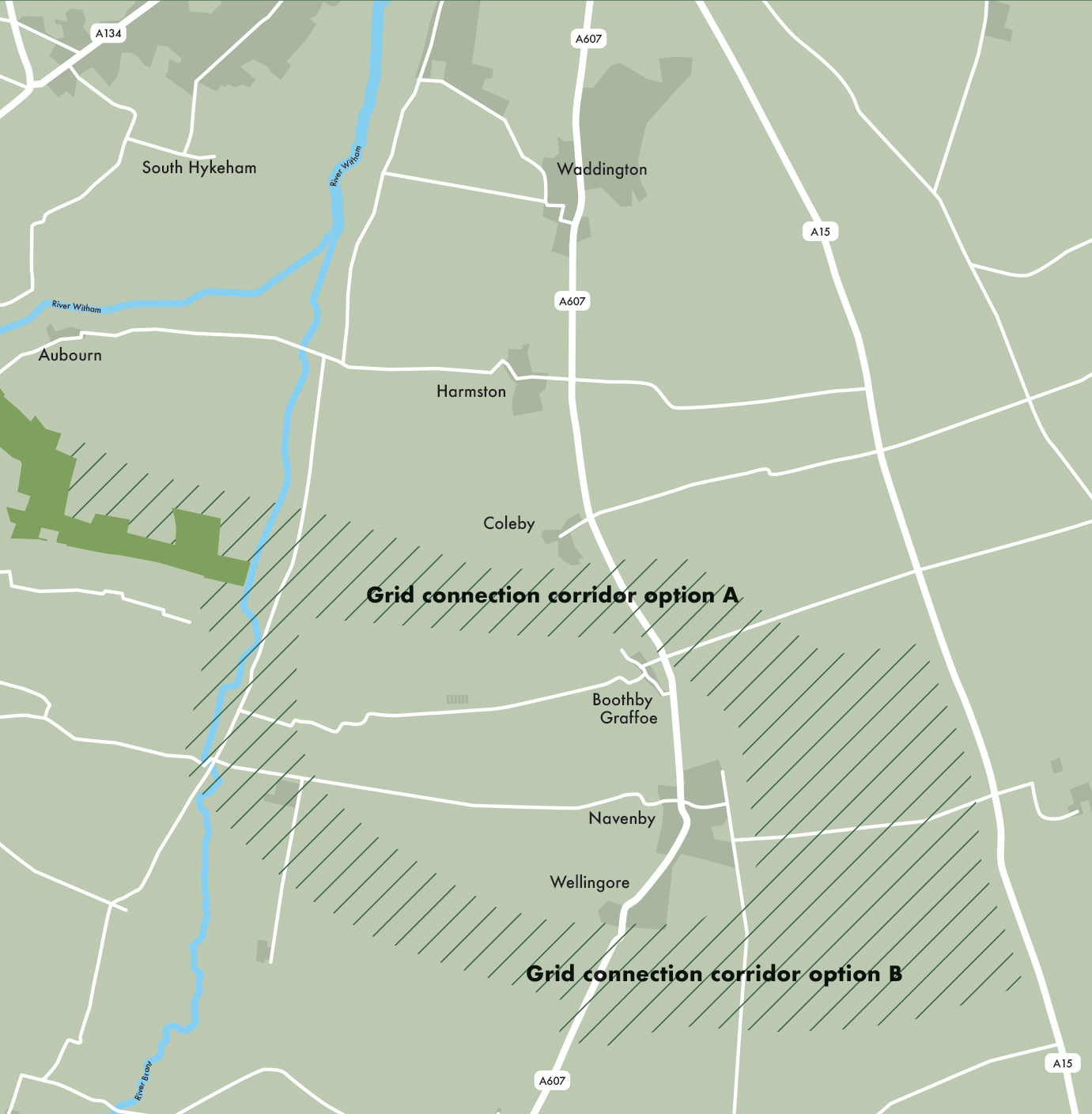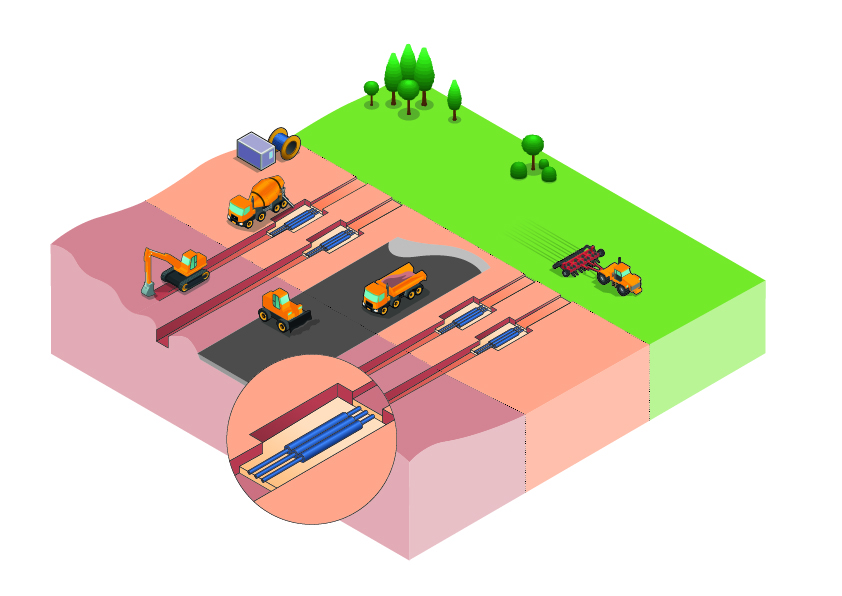Connecting to the National Grid
The electricity generated by Fosse Green Energy will be transported using underground cables from the solar and energy storage park and exported into the existing National Electricity Transmission System at a substation near to Navenby.
National Grid is currently considering a number of location options for the substation. The selected substation will not form part of the DCO application for Fosse Green Energy.
Grid connection corridor options
Studies are being carried out to determine the preferred route for the grid connection. At this stage we have identified two broad grid corridor options. Work is underway to refine these corridors so we can select which corridor meets the objective of minimising environmental and social impact, and which corridor is appropriate for connecting into the selected substation location.
Feedback gathered from consultation will also be taken into account when considering the grid connection corridor route.

Building the connection
The connection for Fosse Green Energy will be built using cables installed underground.
The Scoping Report for the Fosse Green Energy project, which was published in June 2023 and can be found here, presented options for an overhead connection or a connection built with underground cables.
Considering feedback from the Planning Inspectorate’s consultation on the Scoping Report, we have decided to route the cables underground. This removes the landscape and visual impacts of pylons and overhead lines which could have required a maximum height of 50 metres.
The cables are likely to be installed using open cut trenching and it is expected that multiple cables will be placed in each trench. Data cables will be required for monitoring and control of the solar and energy storage park during operation. These data cables will typically be installed within the same trench and alongside the electrical connection cables.
As well as the connection into the national grid, electrical cabling will be required between the solar array areas and battery storage locations.
Underground cable
- Underground cable would most likely be installed by a cut and fill method.
- The cut and fill method requires a 30 to 40 metre working width.
- Trenches would be around three metres wide and three metres deep.
- Other techniques may need to be used when crossing rivers or roads. This includes micro-tunnelling, boring or horizontal directional drilling.

Register for updates
Register hereWhat is a grid connection corridor?
A grid connection corridor is a broad ribbon of land through which an electrical connection could potentially be routed. A corridor can vary in width.
What is a substation?
Substations are high-voltage electric system facilities which are used to gather voltage and step it up or down for export.